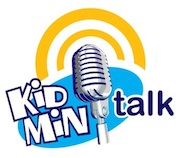• Coach’s Conundrum #10
Coach’s Conundrums
#10. Good Ideas Are My Ideas, And Bad Ideas Are Your Ideas!
Over the years I have learned that I am not the only repository of good ideas. As a leader, you have to know how to solicit ideas from others that can help you to solve problems, but it’s not easy. From the highly deliberate session of brainstorming, to a formal problem-solving meeting, to a casual conversation in passing, collecting ideas is the daily process of problem solving. Being open to giving another credit for their ideas is an issue here. If the only good ideas are your ideas, then you will soon discover how short sighted you really are. Leadership involves the ability to extract ideas from others and pronounce them “good.” This is your best judgment, of course.
As a leader you may have some excellent “informed” ideas, but in working with your team, sometimes giving others the first opportunity for their ideas. Holding on to your idea, which you could have put forth, but did not, might open to door to ownership. When another offers a “good” idea, they now can take ownership, because it was “their” good idea. But if that same idea is your idea, you would own it as a “good” idea and maybe advocate for it as a good idea. Being willing give away your ownership for the sake of the ownership of another, which is what deferring to others is all about.
Here are a few ownership exercises you can try to prove this conundrum.
1. One of the best ways to get ideas is to be a person who shares ideas. If you can encourage thought with another, they might be willing to offer ideas that build upon your idea. Or they just come up with a totally new idea. But you have to encourage the response you get or you just might find the sharing of ideas stops right there.
2. Ask someone to help you come up with some ideas to solve a problem. Then observe what ideas are offered? Maybe, you could offer a problem that you have an idea how to solve. If they come up with the same idea, without you telling them it was your same idea, just agree with them and give them the credit for the idea. As you move forward implementing their idea, they will learn what you do with their good ideas. You might get some more ideas from them.
3. Some of your leaders might be resistant to your ideas. Try switching the role and give the problem to them to solve. Instead of looking for the credit yourself, try deflecting it to them. Also try to magnify their role as a problem solver. Be quick to affirm their insight. Now try working on their idea, even try to involve others in their solution, if possible. The best ideas might just come from others who resist.
4. Introduce a problem that needs a solution for group discussion. So at your next teachers meeting, have a brief discussion about a problem that needs to be solved. Do not let on that you have a solution. Contribute to the conversation, however, participate only to clarify and draw others out. Write down their suggestions and thoughts—collect data and possibilities. If no apparent solution is forthcoming, move on to something else. Later, maybe another time, bring the subject up again, this time, highlight someone’s former thought and magnify that response. Give them credit for their idea and now you expand the dialogue again, enough to allow others to join in. Try moving forward towards a solution by consensus.
5. Use the principles of Pre-thinking to establish perimeters or guidelines for collecting ideas before you share your problem to solve. You do not have to solve the problem ahead of time, rather stage it for good discussion. Every problem has a setting or condition that needs some discussion before others are invited to deal with the problem. This really answers the question that this problem is able to be solved.
6. Use Brainstorming principles to solve problems as a way of collecting possible ideas that could lead to solutions. It is in the freedom of sharing ideas that can move good ideas along towards good solutions. One of the best ways to get ownership is allowing as many people as possible to weight in to refine, supplement, and build the case for worthy solution to a well defined problem. If you want the highest possible ownership allow all who are affected by the problem to participate in the solution. Also when those same adherents eliminate the bad ideas, it helps them to clarify the remaining ideas, which might solidify the result. Working towards consensus is to be highly valued for the best ownership of ideas.
Be willing to be a learner of how ideas become good ideas and how the ideas of others can be the best ideas. This is what I call “Gathering Around the Good Ideas.”
This is a series: my collection of pithy principles that need some explanation. The implementing of these conundrums could alter your paradigm for children’s ministry or influence the way you approach kids. Check out the other nine Coach’s Conundrums.







Leave a Comment